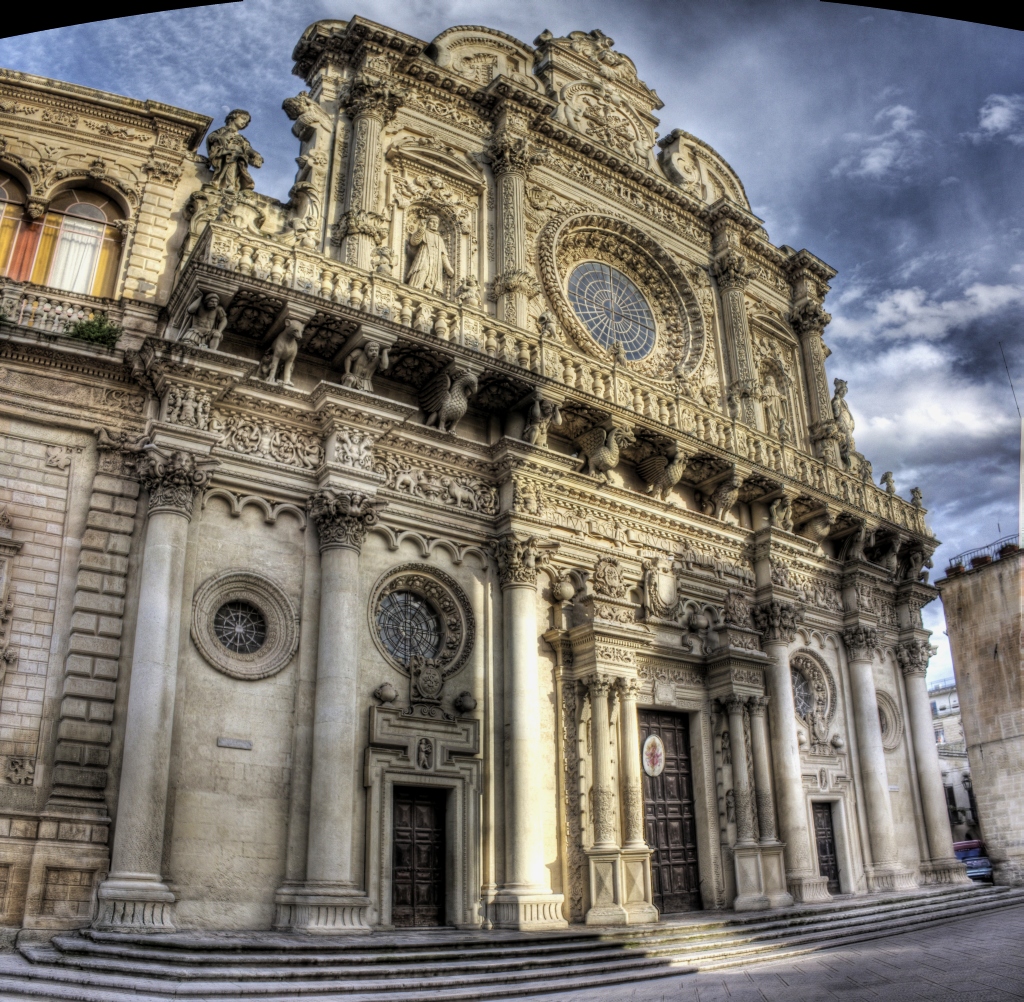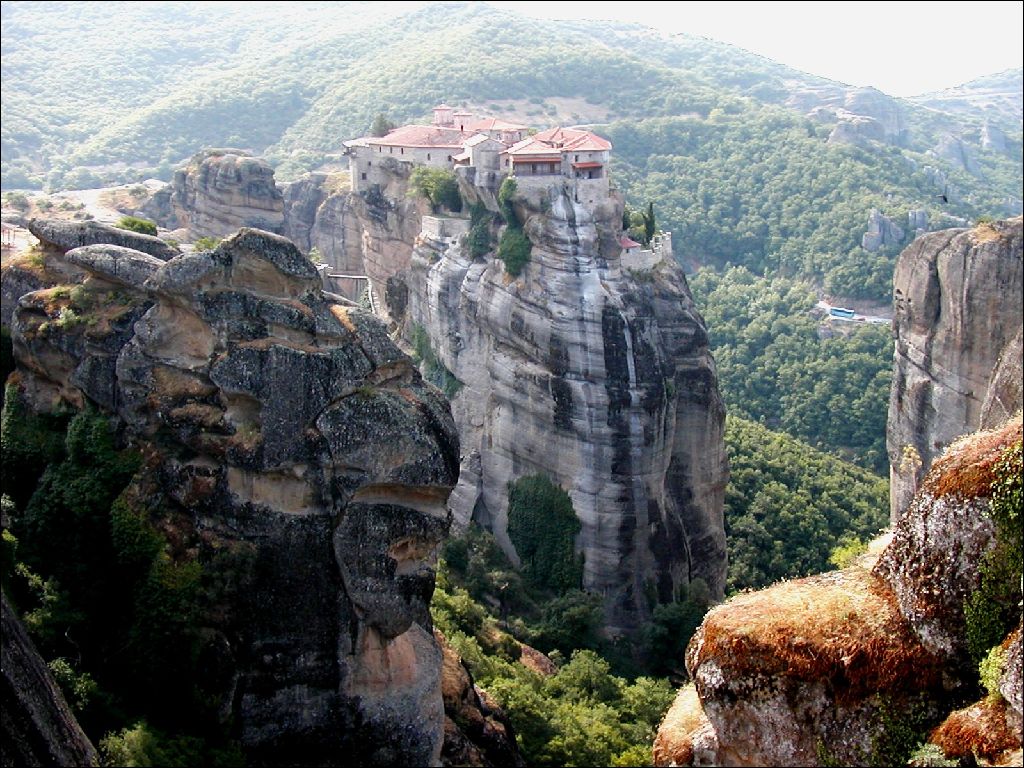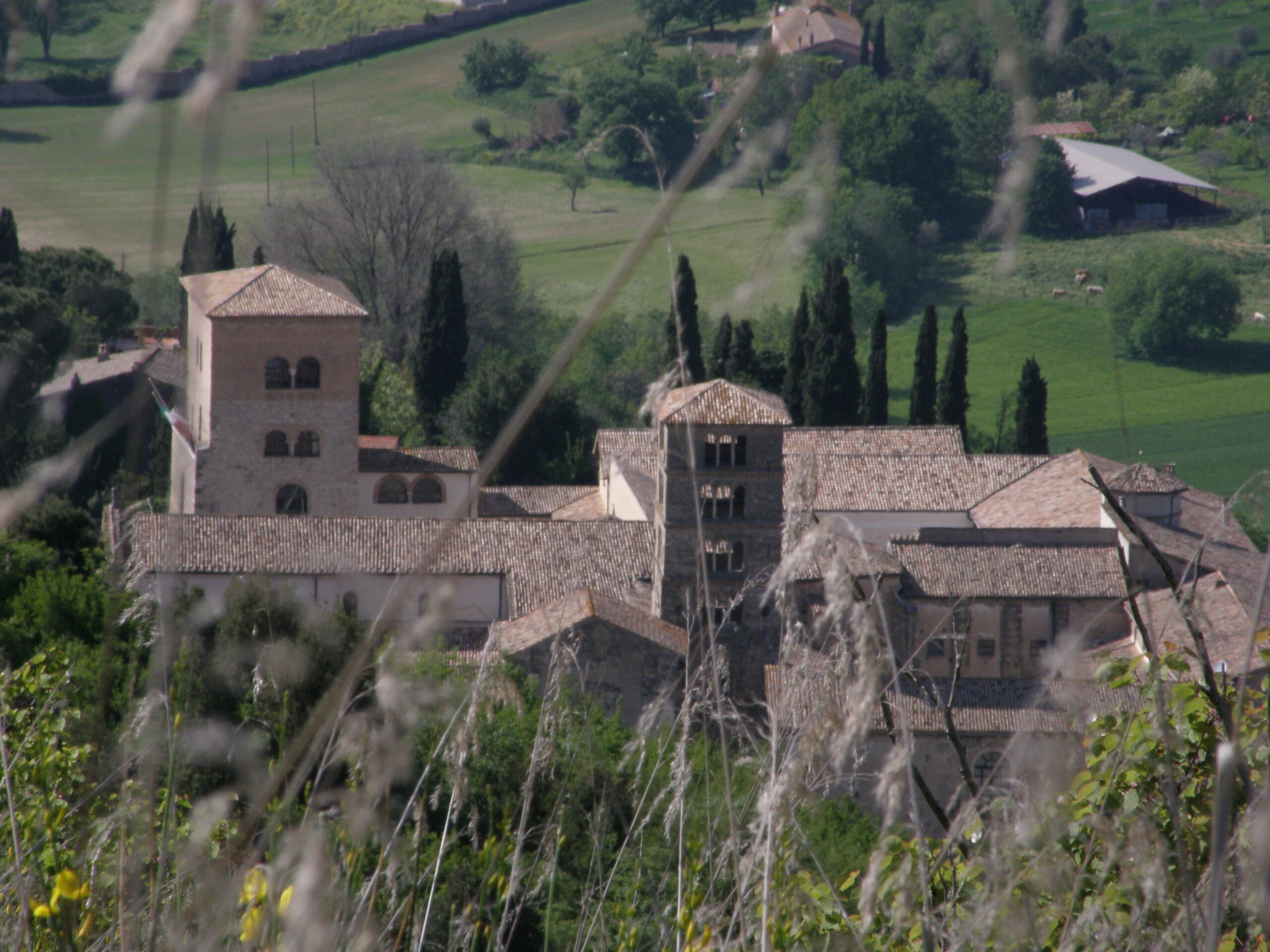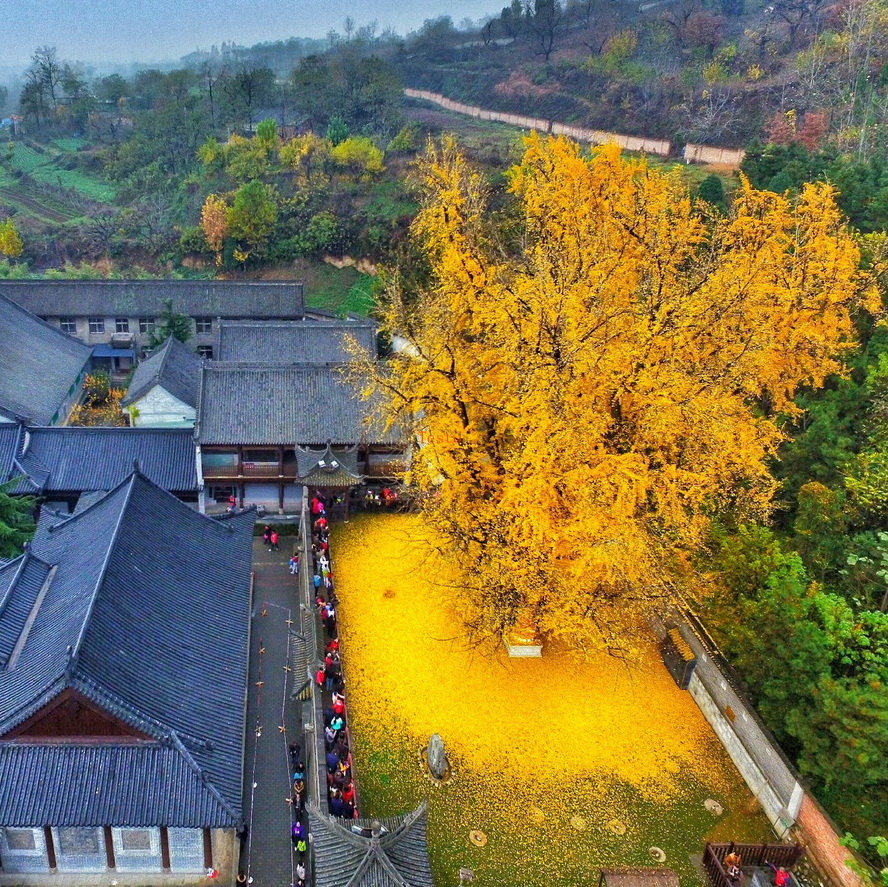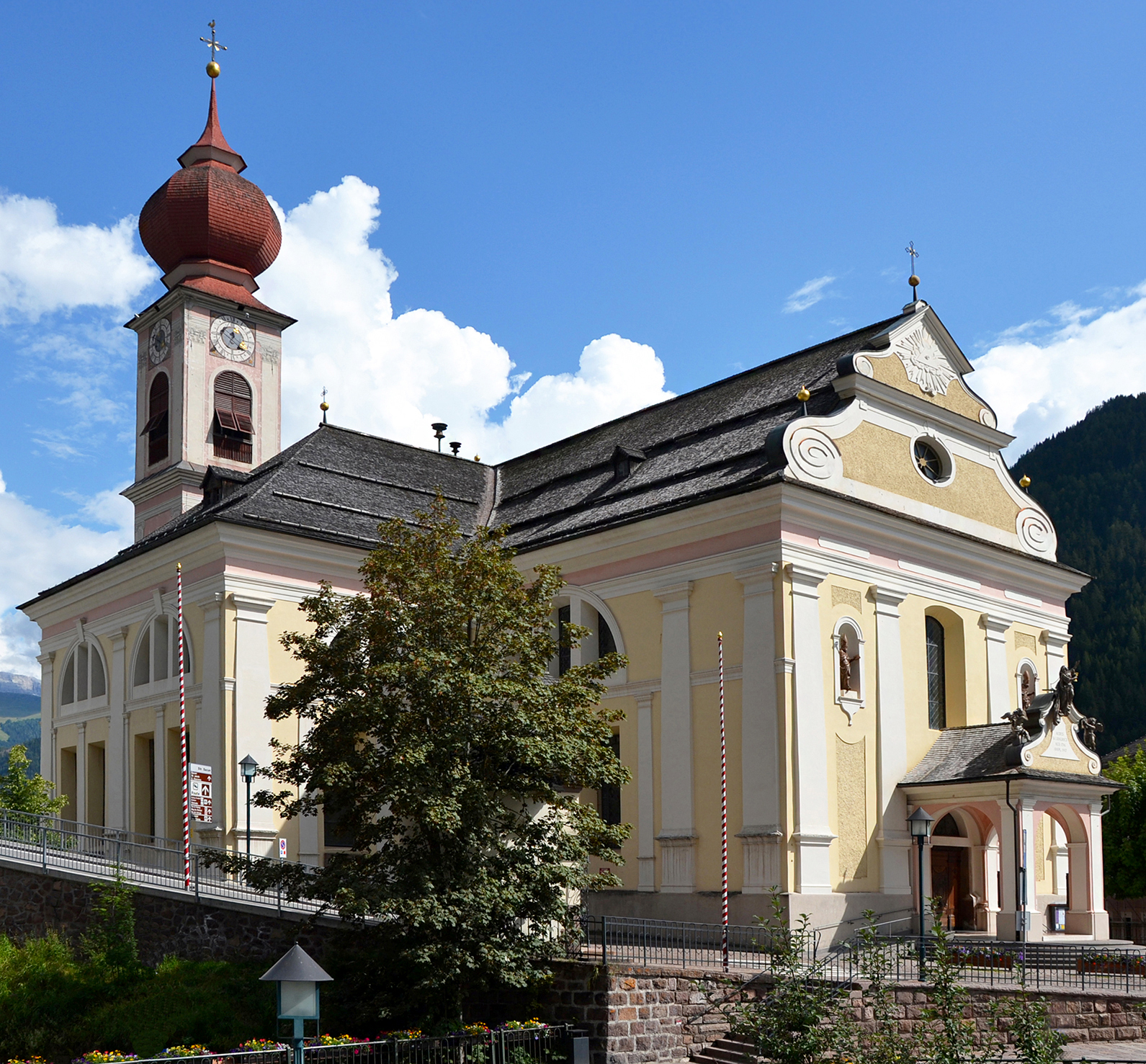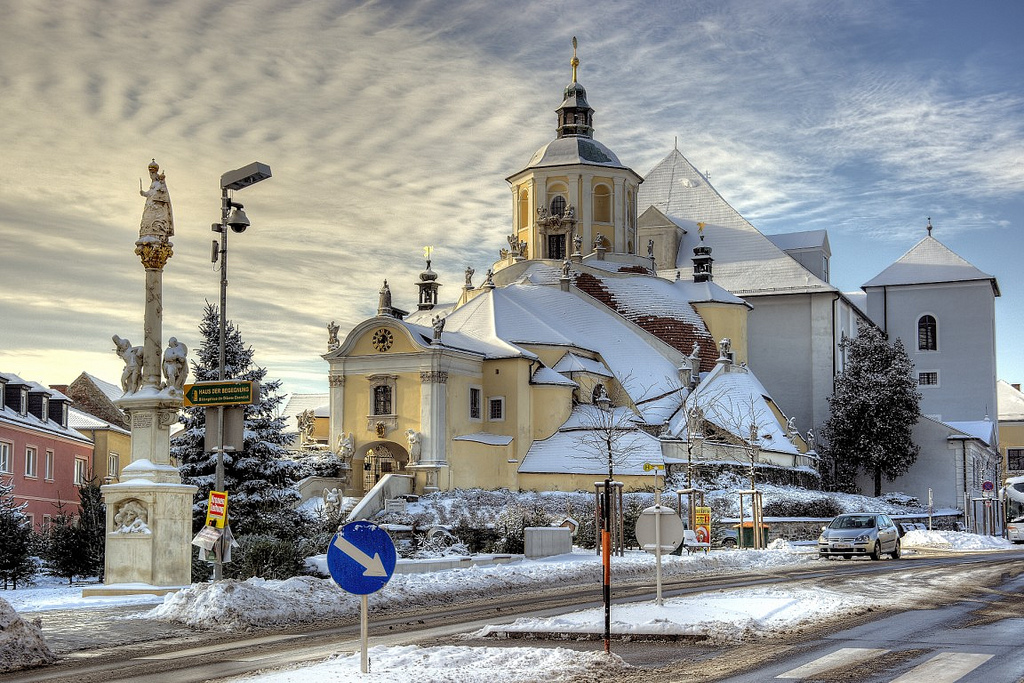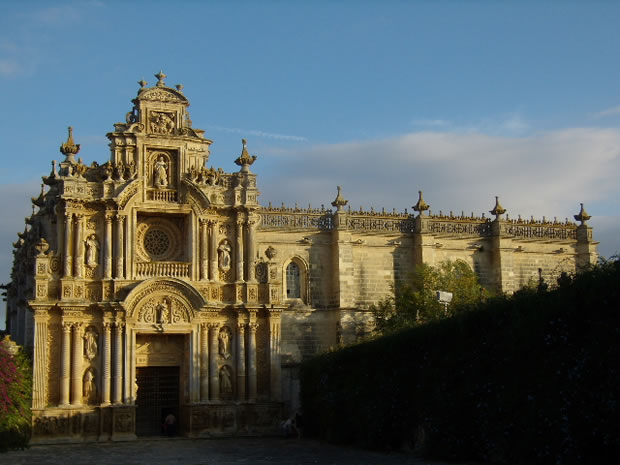The basilica was begun as early as 1353, but its patron, Gualtiero VI of Brienne died three years later; work resumed only in 1549 thanks to the architects Gabriele Riccardi, Giuseppe Zimbalo and Cesare Penna, all from Lecce, and the collaboration of numerous workers of carvers and stonemasons. The work was completed a full 150 years later, in 1695, confirming how ambitious the project was; the effects of their protracted duration are evident in the stylistic ambiguity of the facade, 16th-century in the lower part and 17th-century in the upper part.
The lower part of the facade, punctuated by six smooth-stemmed columns with zoomorphic capitals, is the work of Gabriele Riccardi, the prothyrum with coupled columns and the side portals are due to Francesco Antonio Zimbalo, while the upper part of the elevation is by Cesare Penna. It was to Francesco Antonio Zimbalo that we owe, in 1606, the realization of the main portal, which, with its double pair of Corinthian columns and with the coat of arms of Philip III of Spain at the top, surrounded by those of Maria D’Enghien on the left and of Gualtiero VI of Brienne Duke of Athens on the right, strongly conditions the surrounding space. On the two side doors, however, are the coats of arms of Holy Cross and the Order of the Celestines, whose convent flanks and extends the church.
In the upper part of the facade, immediately after the entablature, runs a series of zoomorphic and symbolic caryatids (among them we find the kneeling Turkish soldier and the suckling Roman she-wolf), which support the balustrade decorated with thirteen putti supporting the crown, symbol of temporal power, and the tiara of spiritual power. Such a balustrade divides the full width of the two orders of the facade. And the sumptuousness of the decorative motifs is concentrated especially in the upper part, where one can admire the splendid rose window framed by the cordonade with the symbols of passion, and by three concentric ferrules with a whirling succession of winged cherubs, berries, grapes, and pomegranates: an allegory evoking seasons, represented by the wheel of life.
The two niches on either side accommodate statues of St. Benedict and St. Peter Celestine. Hidden among the acanthus leaves of the rose window, at nine o’clock, the most attentive will be able to make out the profile of a man, sketched with a large nose, a self-portrait, according to many scholars, of the architect Cesare Penna. A human face surrounded by flames, lions, pelicans, pomegranates, in a superb combination of pagan and Christian images for a building that the whole world envies Lecce.
Closing the profile of the second order, laterally, are the two symbolic statues of Faith and Fortitude; above, another richly decorated band and, finally, the three pieces of the tympanum with the triumph of the cross in the center. The significance of the facade of Santa Croce is the triumph of the Cross over the pagans: the Muslims hold up the balcony and represent the infidels, referring to the Turkish pirates defeated at Lepanto in 1571.
Inside, the Basilica has a Latin cross plan, five naves and eighteen columns with Corinthian capitals. Majestic.
The high altar you see today used to be in the church of Saints Nicholas and Cataldo from which it was taken in 1956. Very beautiful are the paintings you can admire along the walls: the Adoration of the Shepherds, the Annunciation, the Visit of Mary to St. Elizabeth, and the Rest on the Flight into Egypt. Turning your gaze upward, however, you will notice the wooden ceiling redone in the 1800s and the original design of the dome from 1590. Fantastic, for music lovers, is the pipe organ built by the Ruffatti Brothers in 1961 that is located in the chancel.
